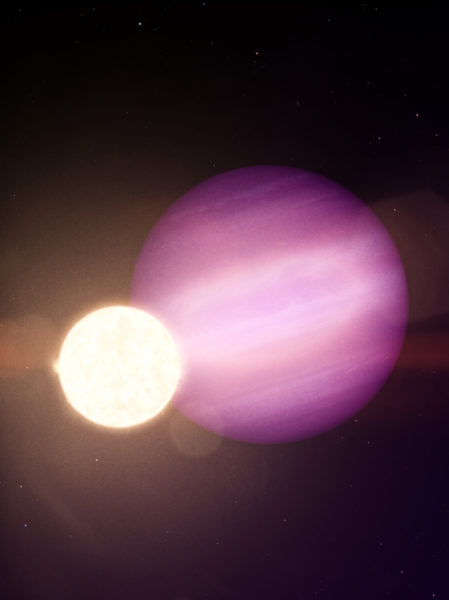Two exoplanet discoveries supply new understanding of Earth’s
[ad_1]

Two worldwide groups of astronomers, aided by Vanderbilt College analysis, have found a various pair of exoplanets, that are offering new insights into Earth’s origins and future.
The astronomers recognized each exoplanets—that’s, planets orbiting stars outdoors our photo voltaic system—following an interstellar survey performed by NASA’s Transiting Exoplanet Survey Satellite tv for pc mission, developed partly by a group led by Stevenson Professor of Physics and Astronomy Keivan Stassun.
TOI-849b, which has a 12 months that lasts 18 hours, is analogous in measurement to Neptune however with a considerably increased mass and density. These contradictory traits have led researchers to deduce that the exoplanet is the uncovered core of what could have began out as a typical gasoline big like Jupiter. In keeping with a launch, the invention of TOI-849b is the primary of its type.
The article concerning the discovery, “A remnant planetary core within the hot-Neptune desert,” was revealed within the journal Nature on July 1.
There are two theories about how the planet’s core might have turn into so unusually uncovered. TOI-849b may need began out as a gaseous planet that misplaced its outer ambiance by being too near its star or colliding with one other planet. Or alternatively, it maybe by no means had an environment to start with, as a result of delayed formation. Regardless, its existence supplies astronomers a singular alternative to review the core of a planet—one thing that isn’t doable in our personal photo voltaic system.
“By means of the invention of TOI-849b, we are able to ponder whether different planets, together with our personal, could very effectively have began out extra like Neptune and over time, both due to residual warmth throughout formation or incident radiation from the solar, brought about a lot of Earth’s thicker ambiance to be boiled off,” mentioned Stassun, the paper’s co-author. “Within the case of TOI-849b, we approximate that this occurred inside the first billion years of the planet’s formation.”

WD 1856 b is the remnant of a planet that’s orbiting a stellar corpse generally known as a white dwarf—what was as soon as a sun-like star however now a relic not a lot bigger than the dimensions of Earth. Earlier than the host star collapsed and have become a white dwarf, its outer gaseous layer expanded and engulfed WD 1856 b however didn’t destroy it. WD 1856 b is the primary recognized planet that has remained intact after such an occasion, opening many questions on the way it arrived and survived in its present location.
An article detailing the invention of WD 1856 b, “A Large Planet Candidate Transiting a White Dwarf,” was revealed within the Sept. 17 subject of Nature.
“Earlier than this discovery, many astronomers assumed that the seek for planets orbiting white dwarfs was pointless. This white dwarf planet tells us that it isn’t,” mentioned Stassun, explaining that astronomers will use this discovery to raised perceive all planets and their potential habitability. “In about 5 billion years, our personal Earth will ultimately expertise the same destiny, being engulfed by our solar because it dies. Will Earth survive that inferno like this planet has? It’s only with a whole set of demographics of planets round totally different stars that we are able to piece collectively the complete household tree of planets.”
In a launch from NASA, Lisa Kaltenegger, the director of Cornell College’s Carl Sagan Institute, explains, “After a system settles down round a white dwarf, it might probably stay steady for billions of years because the star cools. Actually, planets in white dwarf liveable zones might keep situations favorable for all times longer than the time scale predicted for Earth. WD 1856 b suggests planets could survive white dwarfs’ chaotic histories. Now we are able to take into consideration the intriguing prospects for all times on worlds orbiting these lifeless stellar cores.”
Stassun expects that each planets might be studied additional: TOI-849b by the Twinkle mission, of which he’s a founding member, and WD 1856 b by means of TESS. “Till 15 years in the past, all we knew about planets was what we might observe in our personal photo voltaic system,” he mentioned. “These excessive discoveries put our photo voltaic system in context of the bigger realm of prospects of what photo voltaic techniques throughout the universe might be like.”
The neurodiverse group of researchers on the Frist Middle for Autism and Innovation, which Stassun directs, performed a task in creating a lot of the info visualization for each discoveries.
[ad_2]
Supply hyperlink